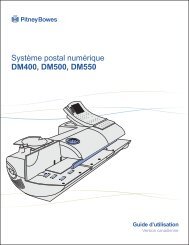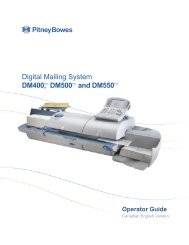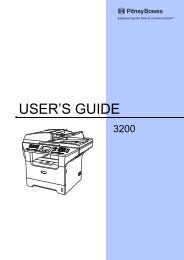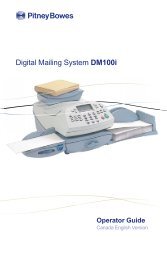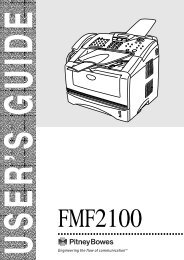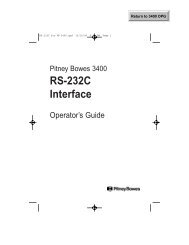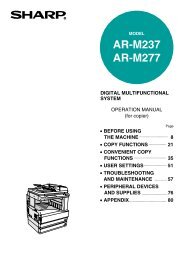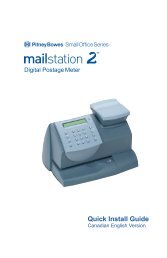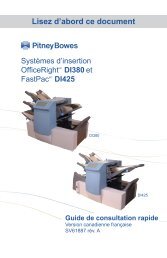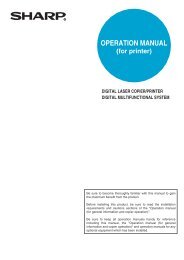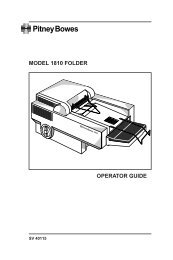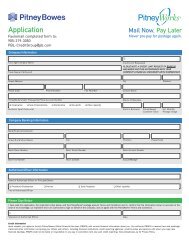DM1100™ DM Series™ Digital Mailing System Operator Guide
DM1100™ DM Series™ Digital Mailing System Operator Guide
DM1100™ DM Series™ Digital Mailing System Operator Guide
Create successful ePaper yourself
Turn your PDF publications into a flip-book with our unique Google optimized e-Paper software.
7 • Standard Accounting<br />
Your<br />
Accounting<br />
<strong>System</strong><br />
Features<br />
Account<br />
Structure and<br />
Hierarchy<br />
You can configure your mailing system to track and account for postage<br />
used by departments or individuals within your organization. Your system<br />
stores the following information for each account.<br />
• Account name (alphanumeric)<br />
- 32 characters for top level accounts<br />
- 16 characters for subaccounts<br />
- 16 characters for subsubaccounts<br />
• Account ID number<br />
• Item total. This is the total number pieces of mail charged to an account<br />
since it was last cleared.<br />
• Value total. This is the total amount of postage charged to an account<br />
since it was last cleared.<br />
• Account password.<br />
Your mailing machine has 25 standard accounts. You have the option to<br />
increase your accounts to 100 or 300 accounts. Only your chargeable level<br />
accounts are counted towards your account total. (Chargeable accounts<br />
are explained in the next section.)<br />
If you need information on how to structure your accounts, refer to the<br />
Account Structure and Hierarchy section in this chapter.<br />
You can structure your accounts in single or multiple levels. For example,<br />
you can divide a top level department (account) into two or more major sections<br />
or subaccounts. You can further divide these subaccounts into two or<br />
more sections or subsubaccounts. The following examples demonstrate<br />
some of the ways in which you can structure your accounts.<br />
• When you create a top level account, you can charge funds and pieces<br />
to that account. This is the working (chargeable) account because at<br />
this point it does not have any subordinate accounts:<br />
EXAMPLE:<br />
Account - Engineering<br />
• If you create subaccounts for the original account, they become the end<br />
links in the account chain and identify the departments where you disperse<br />
funds:<br />
EXAMPLE:<br />
Account - Engineering, Subaccount - Software<br />
Account - Engineering, Subaccount - Industrial Design<br />
• The original Account now serves as an administrative account that<br />
owns and contains totals for the lower subaccounts.<br />
7-12 SV62220 Rev. A



